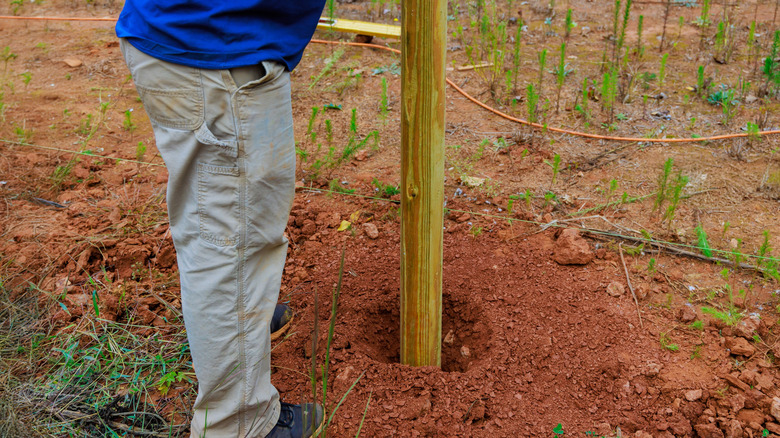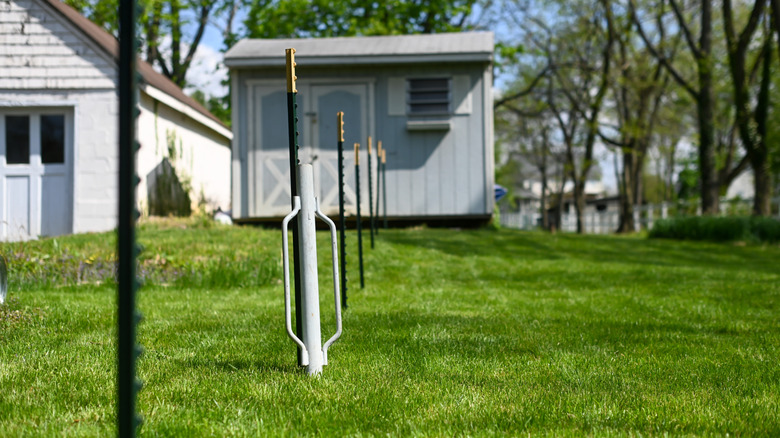What To Know Before Skipping On Cement To Install A Fence
We may receive a commission on purchases made from links.
Although some people will always reach for a bag of cement when they are going to install a fence, there are a number of reasons not to. Cement isn't particularly expensive or difficult to work with, but the dust is a potential health hazard. The manufacture of cement also produces high levels of greenhouse gases, so those who are keen to be as environmentally responsible as possible will likely want to avoid it. There's also a practical aspect. If the fence is some distance from the house, then getting cement and water to it could be difficult. However, if you're trying to build the perfect fence, there are some important things to consider before skipping this step altogether.
Dirt, sand, gravel, and crushed rock can all be used to fill in around the post hole instead of cement. Once compacted, these may provide sufficient support, but whether or not they stand the test of time will depend on what the fence is for. If it's only decorative, there shouldn't be a problem. However, if the fence is regularly buffeted by strong winds or pushed against by animals, the infill material could eventually work loose and cause the posts to lean.
Other ways to install a fence without cement
The fence post material you choose can also have an impact. For example, some fencing contractors advise that wooden posts should never be set in cement because they will eventually rot and need to be replaced. The job is made harder if there's a big lump of cement to remove.
So, what are the alternatives? Simple spiked posts have been pounded into the ground to fence in cattle for generations, and the same method can be used around your own yard. Metal post drivers, like the MTB Supply Fence Post Driver, are designed for this purpose. Driving into solid ground rather than digging a hole and back filling may be harder work, but the finished fence is arguably stronger. Anchors, like these Kdgarden Fence Post Anchors, are another option. These are made of steel and have a long spike that is driven into the ground. A pocket on top holds the fence post securely. They are easier to install than spiked wooden posts and have a rust-resistant finish for durability. Ground screws are another no-dig fence post holder, though they are usually more expensive than post anchors.
Both of these devices are generally intended for wooden fence posts. With a little ingenuity, it might be possible to use them with concrete or vinyl posts, depending on their size. However, while there are workable alternatives to using cement to install a fence, it remains the most versatile solution because of its durability and the wide variety of post types it can be used with.

